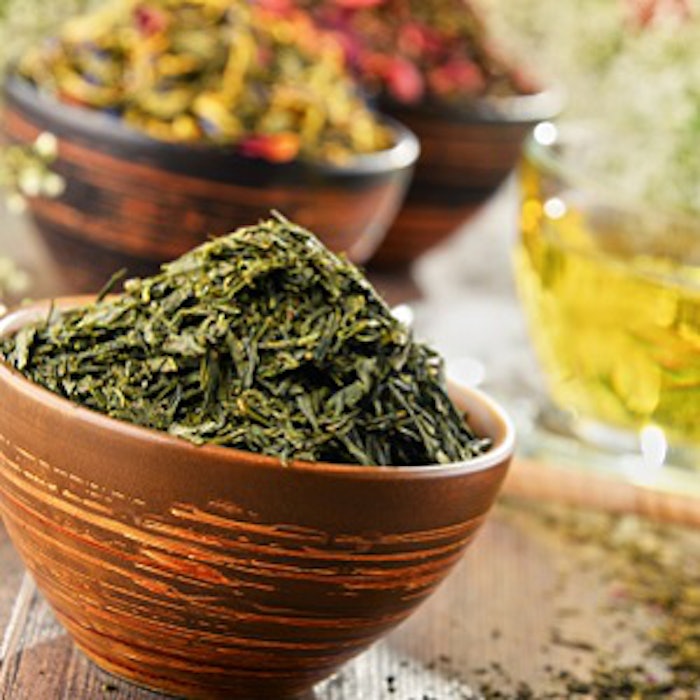
A drink of history and tradition, tea continues to be consumed by many around the globe today. Tea, at its most basic, comes in four types: black, green, oolong and white. However, the drink has certainly evolved to see more unique flavor blends. Studies linked to the drink’s consumption and its health benefits have prompted numerous individuals to increase their intake of tea, especially in Western nations. Aside from its standard offering as a beverage, manufacturers and restaurants have recently introduced tea in other original formats.
Novel Flavor Combinations
Teas carry a wide range of flavors and blends, some of which are very strong in taste and others less bold and lighter. While established blends in North America such as Earl Grey, English Breakfast and Darjeeling are most visible in the tea group, other variants with exotic ingredient combinations have appeared for a more flavorful appeal.
In Germany, an all-natural tea called Alnatura Chili Kakao Tee launched as an interesting combination of both sweet and spicy herbal blends. This tea’s ingredient list contains a mixture of cocoa peel and cinnamon, with chili, fennel, ginger, licorice and peppermint extracts. For those consumers craving a tea with an awakening kick, Chili Kakao Tee’s “aromatically-fiery taste” best fulfills their needs.
Unconventional Applications
No longer are teas solely available in their customary format as a hot or iced beverage. Over the past year several manufacturers have introduced tea-based ingredients in their food brands. Tea’s appearance in non-beverage products communicates its versatility to other segments. For manufacturers choosing to leverage their existing brands with health claims, the incorporation of tea proves wise.
In the United States, the healthy food mainstreamer Kashi introduced its Heart to Heart Honey Toasted Oat Cereal with white tea extracts. Several cereals formulated with green tea have appeared in the market; however, Heart to Heart Honey Toasted Oat is the first to contain white tea. White tea was included in the brand’s ingredient list to promote healthy arteries. This ingredient truly differentiates Kashi’s cereal product from other brands positioned for cardiovascular health.
Tea for the Sweet Tooth
Desserts are most ideal for flavor experimentation by manufacturers and restaurants; individuals are generally more open to tasting non-traditional offerings in this segment. Because some tea blends are inherently sweet or capable of becoming sweetened, their use in the dessert category is fitting. For years many have preferred to take their tea sweet by adding cream, honey, substitute sweeteners or sugar. As such, several confectionery products, ice creams and dessert menu items have been created to contain tea extracts.
In Canada, an indulgent chocolate brand called Chocolate Meets Tea is formulated with cocoa and Earl Grey crisps. In addition to its Earl Grey variant, the line launched by Luxury Belgian Chocolate also contains English tea and white and green tea blends. In the foodservice sector, casual eatery Claim Jumper offered a Green Tea and Ginger Crème Brûlée as part of trio named Brûlée Flight. The inclusion of tea in dessert menu items results in a sophisticated sweet for restaurant-goers to enjoy.
From its use for supporting functionality claims to its appearance in sweet food offerings, tea serves many needs. As more manufacturers look to enhance their products with “better for you” stances, the inclusion of tea is a trend that can expect to grow. Its recognition for being the second most globally consumed drink after water positions tea as a powerful extract for firms to use in leveraging brands.
Mintel Global New Products Database (GNPD) tracks new product launches, trends and innovations internationally. For more information, visit www.mintel.com or call 1-312-932-0600.










